Alpine Camping
The mountain terrain is an exhilarating place to camp. The four seasons cast their shadows uniquely in the Alpine environment. The changing seasons make the Alpine experience uniquely different. The same place in the spring will look like a different place by fall. Spring flowers, lush summer green up, vivid fall colors, and winter’s deep snows makes the difference. Your spirit is invigorated by the sky blue waters, the clean streams, and the majestic mountain peaks. Mountain camping provides outstanding scenery, but it also makes a physical challenge because of the elevations to be climbed. It also provides an abundance of fish and wildlife to enjoy.
The mountains have their unique climatic zones that can present challenges to the camper. With an increase in elevation, both the oxygen and the temperatures fall. The amount of precipitation in the way of rain or snow increases. Each mountain range offers varied challenges and unique climatic patterns. In the summer the climate can be predictably mild. In the other seasons the alpine conditions are predictably cold and wet. Heavy snow and rain can be expected during the spring, fall, and winter months. Thunderstorms occur during the summer months. In some mountain ranges this can happen nearly every afternoon. The morning sky starts off without a cloud in sight, but by mid-afternoon you can be pelted with hail, rain, and lightning. The temperature can drop dramatically. These summer storms are unpredictable.
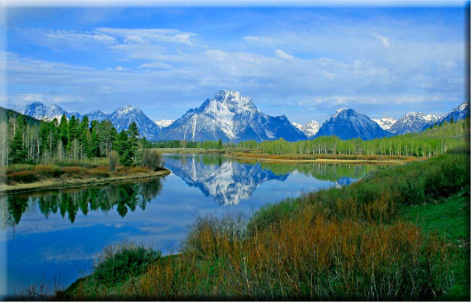
Above timberline the sunshine can be unrelenting and the winds can blow to gale forces. Here shelter is nonexistent; these forces can quickly cause dehydration. Serious sunburn and windburn can be a problem. You must go prepared.
Today the weather forecasts are fairly accurate. The predictions for the surrounding valleys can be right on while the area above timberline can be dramatically different than what’s predicted. Micro climates can exist in high Alpine areas. These areas are overlooked by the weatherman’s forecast. So it is wise to be prepared for extremes in the weather. Plan ahead by looking at the weather forecast, but bring along extra protection in the way of shelter, sleeping bag, and clothing. Be prepared for the unexpected.
One August day I hiked into a timberline lake basin in Utah’s High Uinta mountains. It was a sweltering 90° plus August day in the valleys below, but I spent the night with a foot and a half of new snow falling on my campsite. I could have gone with only a tee shirt and shorts because that was appropriate clothing for when my hike started, but I really needed a winter parka and a 20° sleeping bag by evening. I’m thankful that I brought a tent with me, but I’d left my socks outside on the ground. I had to dig through deep snow to find them, and it was not an enjoyable experience putting on frozen socks.


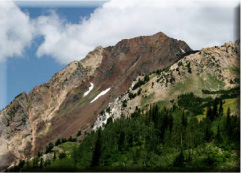
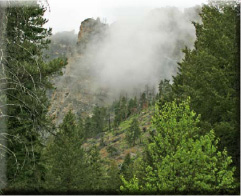
Camping can be more enjoyable if you plan your trip for the middle of the season. That way the mountain climate is more predictable. The major variations seem to occur at the juncture of the season changes: that is, late May can bring a snow storm while in mid-July such a snow storm would be a very rare occurrence. A late March trip can be greeted with a warm spring sun or a late winter snow storm. A general rule is that late summer is an ideal time to hike in the Alpine areas. The afternoon thundershowers have abated, the mosquitoes are gone, and the nights have an invigorating crispness to them. The afternoons provide warm sunshine. Also, the stream crossings are easier to ford because the spring flooding has passed. The mosquito season is at its peak for about a month after the snow melts. After that the mosquitoes have laid their eggs and expired. During the height of the mosquito season, these pests can become unbearable. As soon as evening shadows fall, hoards of biting insects seek your precious blood.
When camping and hiking in the mountains, take the time to reward yourself by simply enjoying the majestic views. Don’t be in a hurry to reach the next destination. Enjoy what’s in front of you now. Hiking in the mountains can become a physical challenge. Both the steepness of the trail and the lowered oxygen content of the air make exertion difficult. Expect slower progress when hiking in Alpine areas. Most of the trails I hike on are rocky, rough, and steep. The smooth level trails are found in the valley floor. A long climb with a heavy pack can become taxing. Expect to progress at about half the speed that you would travel on a level sidewalk at home. When I walk on a sidewalk, my average pace is close to four miles per hour. But on an Alpine trail my progress is curtailed to only two miles per hour. So plan your hike accordingly. An eight mile backpacking trip in the mountains takes me about four hours instead of two hours in the valley.
Alpine sickness is a severe, acute illness. The atmospheric pressure is lower at higher elevations and with every breath you inhale less oxygen. In some people this can result in an acute illness called altitude sickness. Shortness of breath is a symptom. Thank goodness not all campers experience altitude
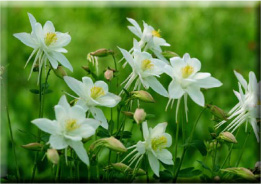
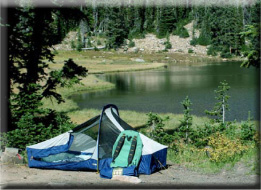
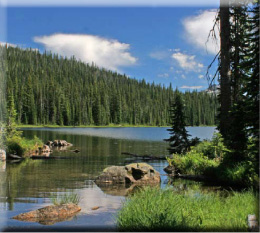
sickness; I have never been afflicted with it but some of my companions have. I’m good to about 12,000 feet, but above that elevation I notice my body’s pace or my hiking progress is curtailed. I’ve had friends that have become ill at only 8,000 feet. Their symptoms were: nausea, dizziness, and severe headaches. This can be dangerous to those afflicted. They must descend immediately to a lower altitude where they can recuperate. It can be an extremely unpleasant condition for them because they must exert themselves further by walking down the trail.
Most people can become accustomed to the high altitude if they take the time to acclimatize themselves by spending a few extra days in high altitudes. Their hematocrit can thicken and increase the number of red blood cells that are needed to transport oxygen and discharge carbon dioxide.
Hiking the mountains is challenging, but once you reach your destination, whether it’s an Alpine lake or a majestic peak, the accomplishment is exhilarating. There are many mountains that can be climbed safely without climbing gear. Our tallest buildings are only about 1,000-1,200 feet high. Climbing a mountain may require three or four times these building’s height. That’s a whole lot of stairs and requires a high level of fitness.
Animal encounters in the mountains can be a hazard. Predatory animals such as grizzly bears, black bears, wolves, and mountain lions can be dangerous. A cow moose with a calf and a bull buffalo are notorious dangers. Even deer and elk have been responsible for many injuries. Animal encounters are more frequent inside our national parks than outside the parks’ boundaries. Thank goodness most animal encounters are benign. The park animals have become accustomed to humans viewing them and have lost their fear, while outside the parks’ boundaries the animals fear humans and flee.
Viewing majestic wildlife is a thrill. This can be the highlight of a camp out. I will always remember the
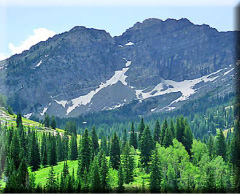
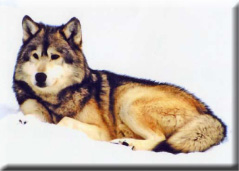
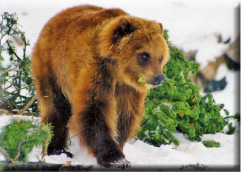
huge bull moose that disliked where I had pitched my tent in his wilderness. He trampled it down with vengeance as I watched safely from afar. My poor blue tent required some makeshift poles after the encounter, and I moved it away from his territory, although the next night I feared he would return.
In another encounter, I was awakened by a snorting grunt. I peaked out of the tent’s rain fly to see a huge bull moose that had just rubbed the velvet from off his antlers. He was staring down my small one man tent. After he made several false charges, I didn’t know whether to stay put, scream, or run. I stayed silent and motionless. My only movement was my trembling. Thank goodness he walked off. I do believe I was too afraid to make a run for it. I still recall the polished white tips of his antlers with remnants of the velvet hanging underneath. I felt totally helpless and totally vulnerable to this bad tempered moose. I can vividly recall this early morning encounter, but I have forgotten the many other times I have slept in. This experience gave me a lifetime memory which is of great value to me.
On a wilderness hike on Oregon’s Grand Ronde River, I quietly passed into a hawthorn berry patch. I first noticed that all the berries were gone from the bottom half of the bushes but the top half were loaded. Suddenly an angry black bear charged me in a flurry of motion. It stopped just short of me and clicked its canines. I humbly lowered my head and slowly backed away into the river. Thank goodness the bear went back to his business of enjoying his berry patch. My knees trembled after this encounter. I had simply received a severe trespass warning and I had responded correctly to avoid injury. I gave the bear his territory by slowly moving out of it and looking down without eye contact. His false charge was successful. I don’t believe animals really want to fight and I did exactly what the bear wanted me to do. I will also recall that frightening unique sound of the bear’s teeth clicking together in defiance. The awesome athletic fury of his fake charge astonished me.
The next year I was hiking in the same exact area. As I approached the berry patch, I warned the bear by singing. My singing is horrible. Paula Abdul wouldn’t even smile; Randy and Simon would kick me off the stage. But the unseen bear was a fan. He gently and quietly at a distance listened to my voice. As I hiked past the berry patch he followed me at a safe distance. The bear was intrigued with my melody. At last I had found someone who appreciated my singing talents. I will always remember these two encounters with the bear in the berry patch.
Other risks in high altitude hiking are hypothermia, heat stroke, fatigue, altitude sickness, blisters, and lost toenails. Solar radiation is intensified at high altitudes because more of the harmful sun rays pass through the thin atmosphere. Severe sunburns and increased risk of solar carcinogens result. I prefer to cover myself with appropriate clothing. I don’t believe that sunscreens are that effective. Long sleeved shirts, hats with a good brim, long pant legs-- not shorts, and quality, polarized, UV protection sunglasses are preferred. I believe sun screen helps you gain a darker tan, but it does little to protect you from the carcinogens.
Fatigue can lead to other physical injuries. I’m more likely to stumble and fall when I’m tired. When I’m tired, I’m careless. A painful fall can cause a bruise, a cut, or a sprain. Sprained ankles and pulled tendons are common injuries due to fatigue.
Dehydration is a serious concern. Your increase in activity requires an increase in your fluid intake. The inconvenience of finding a pure water source, or having to treat water, cuts down the amount of water that you drink. Hence, dehydration can become a problem. In addition, the increase in solar radiation and wind dries out your skin. Sweating is less effective at the high altitudes. When you’re trying to cool down at this altitude, you perspire more and lose extra fluid. The air temperatures are cool and comfortable, and it seems as though you are not as thirsty, so your water intake is lessened.
Hypothermia is another serious hazard. Its real danger is that it clouds your mental awareness. You may not even know that it is present. Hypothermia can make it difficult for
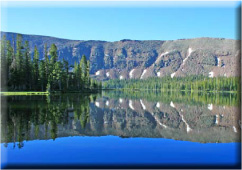
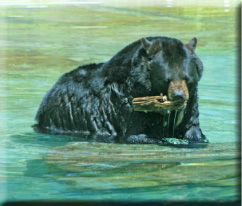

you to make the right decisions. Prevent hypothermia by using an adequate shelter and sleeping bag system and by wearing adequate clothing. Also avoid dehydration because dehydration can exacerbate hypothermia.
It seems that we have dwelt on the negatives of Alpine camping. Being properly prepared for the Alpine environment can lead to the best of times. I love to smell the clean air. The scent of pine and wild flowers is everywhere. The lack of air pollution is a plus. The smell of food cooking outdoors is another great pleasure. Taking the lid off a Dutch oven, releasing the smell of fresh bread, is like smelling Thanksgiving dinner. Your appetite has risen and olfactory senses are renewed. The sight of the heavenly stars can be astounding. On a clear night, through the thin mountain air, the heavens are on display. The stars seem much larger and more numerous. The moonlight can create illusions of forest animals. That old stump can take on the shape of a regal elk or even a big foot. The dawn’s pink clouds and mountain tops and ridges become alive with the rise of the morning sun. At midday the lake and the sky can become sapphires. The wildflowers and plants have been placed by the master gardener. A hike can become an adventure. The sound of the wind blowing through the trees is like an orchestra’s wind section. The song of a bird is like a vocalist that is always in tune. The call of an elk or a waterfowl pierces the morning silence. The comfort of retiring into a cozy sleeping bag is better than being home. It’s so unlike the inconvenience of a strange motel room.
The next day awakens you with the promise of a variety of outdoor activities that you can’t do at home. A well cast fly to a hungry trout is rewarding. The fish’s rise and take is exciting. As I carefully release my catch, I marvel at its coloration and form. What a jewel of the mountains.
My activities are of low impact because I want to leave the Alpine area better than I found it.
Prospecting in a remote stream can be rewarding as you see a flash of gold in your pan. This reminds me of traveling back in history.
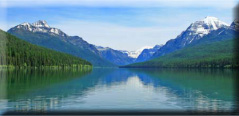
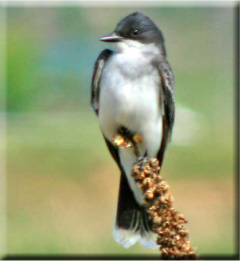

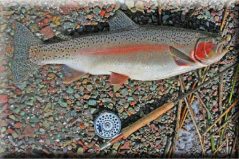


Viewing animals is fun. A camp robber becomes friendly: this jay bird is looking for a handout and is attracted by the brightly colored tent. Any unattended food items will be quickly taken. Squirrels can entertain you. They can become bold and venture into your campsite looking for a treat. I once encountered a creature I’d never seen before. I think it was related to the mole family. It popped up out of the ground wearing only its shirt because its hind quarters were completely naked. The twilight can reveal the big game animals. The sight of a doe and fawn is rewarding. The motherly care and protection the doe displays is remarkable. I gain great respect for the animal kingdom. I marvel at their parenting skills. The fawn learns by mimicking its mother’s actions. I love to watch the doe alarm its neighbors by stomping its foot; soon its fawn does the same. I love to encounter a trophy size buck or bull; it makes me feel like an apex predator. I’ve somehow outsmarted the best that nature has to offer.
Photographing a meadow’s wildflowers, the lake basins and streams, and the mountain peaks is challenging. Composing the photograph makes you feel like an artist. Capturing the photo of wildlife is a hunting adventure.
The physical work is good for you. Your body releases the endorphins produced within. Hiking is one of the best physical workouts available. There is no treadmill boredom with this exercise. When you return home you are both strengthened in body and in mind and your spirit is renewed. This vacation from life’s responsibilities and pressures has renewed your spirit. At work you are more productive.
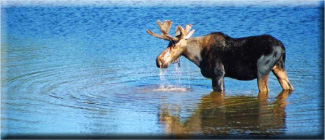
Camping Adventures • Dutch Oven Cooking • Sports Knots
Fly Tying • Freshwater Fishing • Fly Fishing

